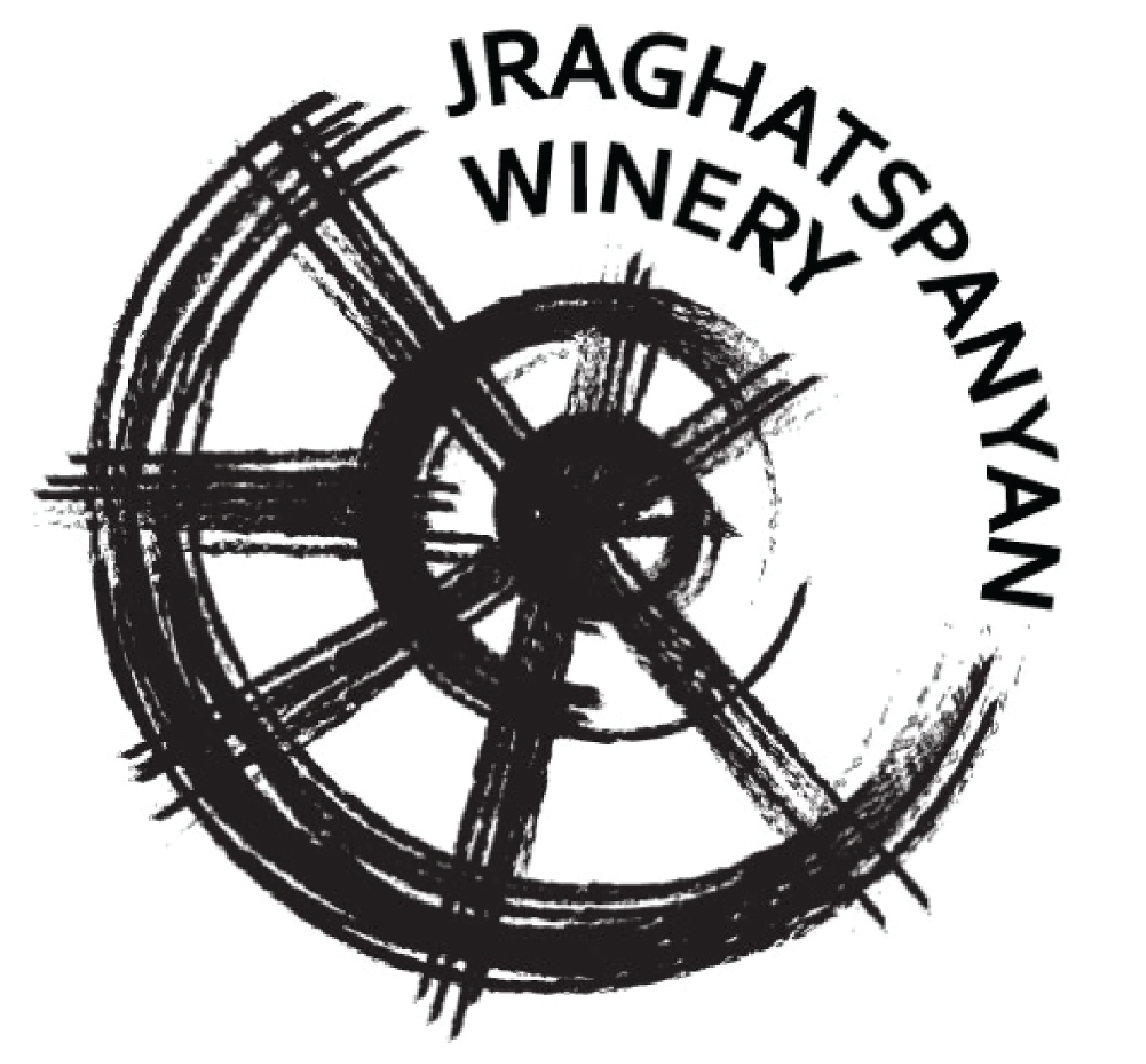Watermill has for centuries symbolized abundance and fertility. It had the leveling effect of the fairness of the fate which grinds all the grains of vicissitudes. The people who dealt with watermills were considered protégés of the fortune. If a family owned a watermill, it was simply a favorite of the fortune.
The Jraghatspanyan family has always been protected by the invisible hand of fate. The very centuries-old family name originates from the word of the same root in Armenian “jraghats” meaning “watermill”.
Good combination of hard work, persistence and love for life has played a decisive salutary role on the life path of the whole family.
A clear purpose and vision of what we strive for and what we want is the pledge for success in every business. This goal is the basis of a loftier, more inspiring and noble dream.
Jraghatspanyan winery has this dream – to become an exemplary Armenian winery with unique high-quality wine. Today, the family proudly and steadily pursues the goal, following its dream and kind heart.
The Jraghatspanyans moved to Armavir from the ancient Bayazet city-fortress (Anatolia, Western Armenia) in late 19th century, where they owned a watermill. Then the brothers with their families settled in the small village of Armavir region, Bambakashat. In fact, the majority of the people of Bayazet resettled here, which is why the village was called Mola-Bayazet before the Soviet period.
The new place mostly changed the lifestyle and routine of the family, however, the great grandfather of the present-day owners of the winery Khachatur Jraghatspanyan continued his favorite work, actively cultivating grape and producing homemade wine from it. During the Sovietization, the vineyards were handed over to the state, and the love and passion for winemaking and dedication to wine were passed on from father to son - Ashot Jraghatspanyan. After his return from war in 1945, he continued his father's work despite the paralyzis of one hand.
The great-grandfather built a pit with a capacity of 1ton in the yard, where already crushed grape was brought. Fermentation started in natural conditions and then the grape juice streamed down in the cellar where the wine was consequently aged.
The very cellar was dug 4m deep under the land where the temperature doesn't go up for more than 20C and doesn't drop below 8C even in the hottest season. The roof of the cellar is built of poplar logs with a thick layer of hay and land on it.
In the 1960s, the production revved up, Ashot Jraghatspanyan purchased old karases (clay amphorae) and oak barrels for aging. Today, the cellar with the vinification pit serves a unique message on dedication to one's cause and avid service to wine to the future generations.
The cellar is filled with indescribable aura of antiquity where every stone in the wall has a whole history. The large number of old attributes of the family winemaking and items create a unique energy flow and the ancient rug from Bayazet dating back to 1893 is the pride of the cellar.
The new era for the winery started in the 2000s, when already the fourth generation of the three Jraghatspanyan brothers started actively promoting the family brand.
It was them who realized that besides the knowledge and practical experience passed on from father to son for already 4 generations, it is vital to have modern scientific approach to winemaking. So, the middle brother, Artem Jraghatspanyan, graduated from the Armenian National Agrarian University with excellence and started writing a thesis on Armenian red wines in 2008.
Today, Artem is the chief enologist of the winery. He is in constant quest for the best blending with daily experiments and tests.
The elder brother, Ashot, manages the finances and documentation and the youngest brother, Artashes, is engaged in sales and marketing of the family brand. The latter is not only a National Agrarian University but also EVN Wine Academy graduate.
The Jraghatspanyan brothers, fully engaged in winemaking, have a special connection to the family history which is evidenced by the logo and labels of the winery. The canvas features a watermill masterfully painted by an artist, which is a tribute to the ancestors and old family traditions.
Aram Jraghatspanyan, the grandson of Khachatur, is the viticulturist of the winery. It is his hard work and persistence that annually yields hand-picked harvest of the white grape varieties from the small own vineyard with a territory of 0.8 hectares.
Initially the family worked with Kakhet, Garan Dmak, Chilar and Voskehat varieties. Today, two varities – Kangun and Garan Dmak – are cultivated in the vineyards on their own roots in Bambakashat.
The first vines were planted in 2006, and vines are on average 14 years old.
The vineyard is designed in a European style. 2380 vines are planted on 0,8 hectares; the distance between the rows reaches up to 2.8m, and the vines are planted 1.5m away from each other.
Due to dry climate of the region, vineyards are intensively (maximum 5 times) irrigated during the vegetative period.
The vineyard is located 860m high above the sea level; the soils are mostly comprised of layers of clay and sand. The precipitation is relatively low, and the clay keeps the humidity in the soil layers.
Besides, there is a diverse level of subsoil waters. In one area, the waters touch the vine in the depth of 1.5m while in other segments water can be reached in 15-18m below the soil.
The pronounced continental climate of Armavir requires the vineyards to be covered. The covering starts in November, and the uncovering begins in early March. Green harvest is applied during the cultivation and the harvest reduces to 10-11tons from 0.8 hectares.
The harvest starts arou September 10 and lasts a week.
The best vintages were 2018 and 2019. 2020 was quite abundant in terms of quantity but the quality was lower.
The winery also produces red wines purchased from 18 local farmers. The cultivation is controled by the enologist, especially one month before and during the harvest. Annually, 100tons of grape is supplied from farmers.
50% of the grapes accounts for selective variety Tigrani and the other half is Karmrahyut. Both grapes are cultivated in Bambakashat. Charents and Saperavi varieties are also purchased for experimental purposes.
The red grapevine supplied from the farmers is around 50 years old on average.
Unlimited passion for vine and wine made the owners think of construction of full-capacity production workshops to produce wines and provide outsourcing services on a larger scale.
The main workshop was designed and built in 2020. The family indeed realized that without modern equipment and technology it is almost impossible to get good results, which is why it started equipping the workshop with modern technology.
The winery uses up-to-date fermentation tanks from stainless steel with a capacity of 8tons from Rodina Haskovo (Bulgaria) and with a capacity of 1t from Inderst (Italy). The tanks are thermo- resistant, with a cooling and temperature- control automated system.
The high-quality winemaking installments are equipped by: ENOMET, ZAMBELLI, DELLA TOFFOLLA (Italy). The modern pneumatic press and destemmer-crusher with a capacity of 5 are also made by ENOMET (Italy).
The winery is also equipped with specialised refrigerating machines ensuring multilevel cooling system and temperature control in various production processes.
The bottling line is comprised of semi-manual 4-compartment equipment.
The fermentation takes place with yeasts from Laffort (France).
The wine is aged in Caucasian oak barrels of local production. The barrels are 230l and 400l with a medium toasting level.
Besides winemaking, Bambakashat is also known for several hereditary families of potters specialized in production of clay karases. Karases from the great grandfather are well preserved in the cellar. They are not yet engaged in the ageing, however, it is planned to start experiments in this field in near future.
The corking is done with agglomerate corks Carat + from Korken GÜLTIG (Germany).
The bottles for rose wines are purchased from local producer Saranist and for the rest of the wines Verallia (France) bottles are used.
The overall production capacity of the winery for 2020 made 10 000 bottles. It should be noted that the capacities of the winery allow increasing the volumes for up to 100 000 bottles a year.
The winery currently produces 2 lines – Classic (Red, White, Rose) and Reserve (Red).
Reds account for the 55% of the overall volume while 20% are the whites and 20% - the roses.
The first wine was bottled in 2018 and it was released only in May 2019.
2017 was the first vintage of Jraghatspanyan Red Reserve – 800 bottles. Today the second 2019 vintage of Reserve is aged to be released only in 1.5 years.
Jraghatspanyan Red Reserve is aged in an oak barrel for 1 year and then it is kept in a stainless steel tank for 7-8 months. After the bottling it stays in the cellar for 6 more months to de-stress the wine.
The grapes purchased from the farmers are thoroughly selected on multiple levels.
The enologist initially gets wine stock from 4 varieties (2 whites and 2 reds). In this phase, the locations of the vineyards, the harvesting time, cultivation process, yeast strain and various other factors are considered. In this regard, the fermentation takes place separately. Around 24 various types of wine stock is received, numerized and ripened separately, too. Only after all this, the long and tedious process of blending starts.
The unique feature of the winery is the cultivation of Tigrani variety and its blending. Each year, the blending of the reds stays the same – 50% Tigrani, 50% Karmrahyut, and only the farmers, locations of the vineyards, the selection approach are changed to allow finding the ideal formula of wine.
The young family-run company undoubtedly is willing to develop tourism on the territory of the winery, which is why it is being renovated, the wine tours and tastings are developed for local and foreign wine lovers.
The winery creates a personal enoteca of vintages for their own goals. Around 50 bottles a year from each wine is kept to observe the development in a bottle. The formula of the wine is constantly experimented with to help define its character and the maximum potential of preservation and evolution.
Jraghatspanyan winery is one of the few producers oriented to the local market. The specialization in the domestic market allows them to occupy their own niche and continue working on the quality and quantity of wines.
A small amount of the wines (240 bottles) was purchased in Canada. To expand the markets, the winery negotiates with Holland, France and the U.S.


 History
History
 Vineyards
Vineyards
 Production
Production
 Tourism
Tourism
 Export
Export

